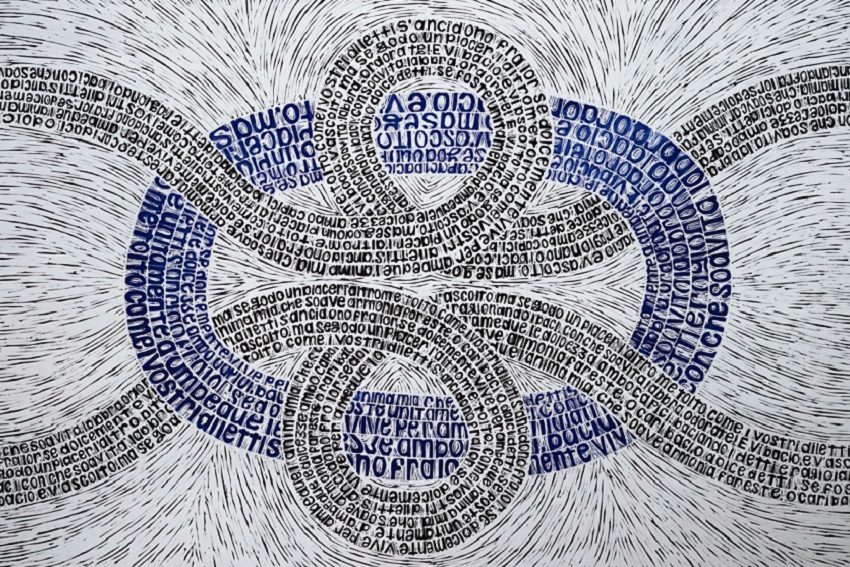Trans-Studio's Singing Stones

All the artists in this exhibition have undertaken studio residencies at the Scuola Internazionale di Grafica in Venice, Italy – thus the ‘Trans-Studio’ title. They each have something different to offer, but everyone has fallen under La Serenissima’s spell.
This might suggest wall-to-wall gondolas and far too many Venetian carnival masks. However, all have shown restraint and determination to say something authentic about their feelings for this remarkable city.
Not to mention creative flair. Gibbons’ abiding interest in plate printing’s traditions led him to investigate the visits that the great northern artist, Albrecht Durer, made to Venice in the early 16th century. Etched and photopolymer imagery defines canal tableaux into which Mr Durer, with the assistance of Gibbons, has subtly insinuated his presence. These
are in-joke capriccios that hint at the city as a series of masks slipping on and off with the passage of time and imagination.
Something of Venice’s alter ego, the rather louche one that lurks in back canals when the light fades, has reached out from Gibbons’ brooding facades to claim Ross’ eye for the liminal zones that hold vignettes of canal-side architecture and boats in suspension. Her eye tilts up and down to notice the details of pavements and rooftops that distracted tourists will never see. Creative technical flourishes involving photogravure and underlays of soft focus digital chinecollé imagery evokes the the sounds of silence.
 Angela Cavalieri, Gira (2014)
Angela Cavalieri, Gira (2014)
I like the idea that Lawler carried a prepared soft ground etching plate in her bag as she walked around. When etched, the casual scratching and bumping have been translated into cuneiform tablets of moments in time. It speaks of an openness to place that conscious thinking or looking can never achieve. The artist talks of being “drawn to the incidental, seemingly insignificant everyday journeys”. Etchings of patterns made by pavement tiles and stones crystalise this experience.
Boettcher, in her collaging and drawing of details evokes visual fragments which suggest the redundancy of traveller memories with the passing of time. But the pump of the city, what the artist calls its “driving nature”, finds expression in decisive mark making and signs of life on the streets.
Printmaking processes of their technical nature and studio constraints in terms of the size of presses and so on, tend to favour intimism. Not so some of the larger works of Cavalieri. And when we say large, imagine a lino cut printed onto an almost two-meter length of canvas and other, banner-like works nearby, of slightly more modest scale. This alone would be sufficient to distinguish the artist’s practice – its grand, monumental sweep of imagination.
The other distinguishing factor is the use of words and te xts to build the images. Cavalieri began working in this fashion in the late 1990s and has continued to explore its outer limits to the present day. The larger works in Trans-Studio (accompanied by other, smaller relief prints) have been inspired by the artist’s passion for the work of the Venetian composer Claudio Monteverdi, who composed his late, magnificent works in that city in the early seventeenth century.
The largest print, Il Ritorno, incorporates lyrics from one of the composer’s last operas, Il Ritorno d’Ulisse in Patria. This creative dialogue with Monteverdi’s operas and the early poets who inspired his madrigals is motivated by the artist’s interest in the use of ‘word painting’ in music. Cavalieri comments, “The music and the lyrics create a visual picture to me, I see the possibilities of letters and shapes.” The dominant motif of this image is a double-arched bridge composed of ‘word bricks’ straddling swirling waters of rhythmically orchestrated texts.

Angela Cavalieri, Il Ritorno (2015)
Some inspiration comes from Cavalieri’s close familiarity with the printed images of classical Rome created by the 18th century artist Giovanni Piranesi who once said that “I need to produce great ideas, and I believe that if I were commissioned to design a new universe, I would be mad enough to undertake it.”
This spirit looks to have rubbed off on Cavalieri’s dialogue with the sweeping passions of opera and the ambition of Monteverdi to create in his music an equivalent to the emotions he felt when reading the early poets. The artist matches the composer’s imagination by articulating the bridge as a double arch, symbolising setting forth and returning.
Critical commentary on Cavalieri has fixed on this process of journeying as central to her practice, her identity as a migrant child growing up in Melbourne with little English, then constantly revisiting the Italy of her parents to explore a sense of connection with place and history. In these visually arresting images, time and space fuse and stones sing.
Trans-Studio
Sue Boettcher, Angela Cavalieri, Geoff Gibbons, Amanda Lawler and Tricia Ross
Studio Brompton, 91A Drayton Street
Opens Thursday, March 2
adelaidefringe.com.au
Header image: Angela Cavalieri, Ragionando (2015) (detail.)